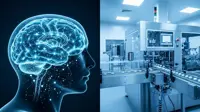India to generate 30 lakh MT of e-waste by 2018: ASSOCHAM-Frost & Sullivan study
21 Apr 2016
In a bleak forecast on the eve of 'World Earth Day', an ASSOCHAM-Frost & Sullivan study has said that India's annual electronic waste (e-waste) is likely to reach 30 lakh metric tonnes (MT) by 2018 from the present level of 18.5 lakh MT.
Mumbai tops the list with 1.2 lakh MT followed Delhi-NCR (98,000) and Bangalore (92,000), the study said. Other cities, Chennai, Kolkata, Ahemdabad, Hyderabad and Pune also generate substantial e-waste.
The study revealed that a mere 2.5 per cent of India's total e-waste gets recycled because of poor infrastructure and legislative framework. Over 95 per cent of e-waste generated is managed by the unorganised sector and scrap dealers.
Child labour, in the age group of 10-14, estimated at around 5 lakh, is engaged in various recycling activities without adequate protection and safeguards in various yards and recycling workshops. ASSOCHAM's report strongly advocates legislation aimed at preventing child labour into collection, segregation and distribution in the e-waste recycling business.
Computer equipment accounts for almost 70 per cent of e-waste material followed by telecommunication equipment (12 per cent), electrical equipment (8 per cent) and medical equipment (7 per cent). Other equipment, including household e-crap account for the remaining 4 per cent, it said.
"It is a matter of concern that most of our e-waste is handled in the most unscientific way by scrap dealers, who may be inadvertently handling radioactive material, as was brought to light in the past in a Mayapuri (West Delhi) case," ASSOCHAM Secretary General Mr D S Rawat said while releasing the paper.
E-waste typically includes discarded computer monitors, motherboards, Cathode Ray Tubes (CRT), Printed Circuit Board (PCB), mobile phones and chargers, compact discs, headphones, white goods such as Liquid Crystal Displays (LCD)/ Plasma televisions, air conditioners, refrigerators and so on.
Government, public and private industries contribute more than 70 per cent of e-waste while 15 per cent comes from households. Household appliances such as televisions, refrigerators and washing machines make up the majority of e-waste generated. Computers make up to 20 per cent and mobile phones 2 per cent.
Domestic e-waste contains over a thousand toxic materials that contaminate soil and ground water. Exposure can cause headache, irritability, nausea, vomiting and eyes pain. Recyclers may suffer liver, kidney and neurological disorders'', said Dr. B K Rao, Chairman of ASSOCHAM Health committee releasing the ASSOCHAM paper.
The biggest e-waste recycling market in India is Delhi and approximately 30.0-40.0 percent of the e-waste lands here. Bangalore and Chennai are the next big e-waste markets. Chennai is the fourth largest e-waste generating city and approximately 5.0 MT of e-waste is generated every day in the Chennai Metropolitan area. Almost 60.0 percent of the e-waste generated in Chennai is desktop computers.
The study also provided guidelines on how to tackle electronic waste such as strict implementation of rules, accessibility to e-waste collection centers, providing training to recyclers and bringing the informal recycling sector along organized lines.



















